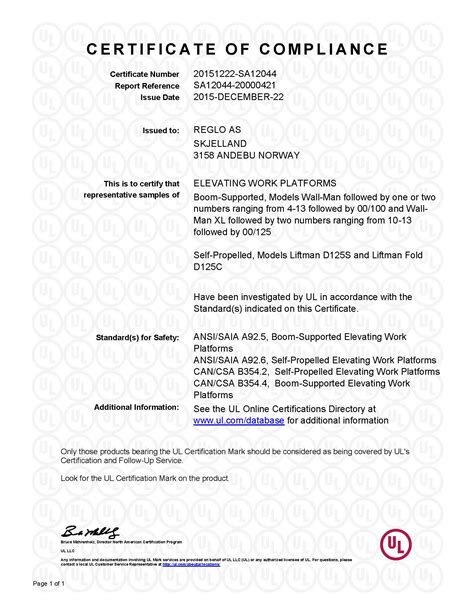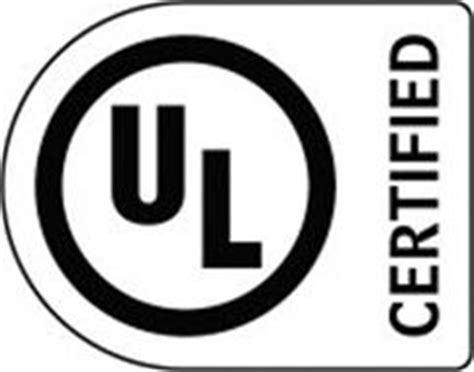Introduction to UL Certification
UL (Underwriters Laboratories) is a global safety certification company that has been testing and certifying products for over a century. UL certification is a widely recognized mark of safety and quality for electrical and electronic products, including printed circuit boards (PCBs). In this article, we will explore what UL certification is, why it is important, and how to properly mark UL certification on your circuit boards.
What is UL?
UL, founded in 1894, is an independent, not-for-profit organization that tests and certifies products to ensure they meet specific safety standards. UL’s mission is to promote safe living and working environments by developing standards, testing products, and providing certification services. UL has a global presence, with offices and laboratories in over 40 countries.
The Importance of UL Certification
UL certification is crucial for several reasons:
- Safety: UL certification ensures that products meet stringent safety standards, reducing the risk of fire, electric shock, and other hazards.
- Compliance: Many countries and regions require UL certification for electrical and electronic products to be sold or used within their jurisdiction.
- Market Access: UL certification can help manufacturers access global markets, as the UL mark is recognized and trusted worldwide.
- Customer Confidence: Consumers often look for the UL mark when purchasing electrical and electronic products, as it signifies that the product has been independently tested and certified for safety.
UL Standards for PCBs
UL has developed several standards that apply to printed circuit boards, depending on their intended use and application. Some of the most common UL standards for PCBs include:
| Standard | Description |
|---|---|
| UL 796 | Standard for Printed Wiring Boards |
| UL 94 | Standard for Tests for Flammability of Plastic Materials for Parts in Devices and Appliances |
| UL 746A | Standard for Polymeric Materials – Short Term Property Evaluations |
| UL 746B | Standard for Polymeric Materials – Long Term Property Evaluations |
| UL 746C | Standard for Polymeric Materials – Use in Electrical Equipment Evaluations |
| UL 746E | Standard for Polymeric Materials – Industrial Laminates, Filament Wound Tubing, Vulcanized Fibre, and Materials Used in Printed Wiring Boards |
UL 796: Standard for Printed Wiring Boards
UL 796 is the most comprehensive standard for PCBs, covering various aspects of PCB Design, materials, and manufacturing. This standard evaluates the following characteristics of a PCB:
- Flammability
- Thermal performance
- Electrical properties
- Mechanical strength
- Chemical resistance
To comply with UL 796, PCB manufacturers must use UL-recognized materials, follow specific design guidelines, and maintain strict quality control processes.
UL 94: Standard for Tests for Flammability of Plastic Materials for Parts in Devices and Appliances
UL 94 is a standard that assesses the flammability of plastic materials used in electrical and electronic devices, including PCBs. This standard classifies materials into several flammability ratings based on their performance in various burn tests.
The most common UL 94 flammability ratings for PCBs are:
| Rating | Description |
|---|---|
| V-0 | Burning stops within 10 seconds; no flaming drips |
| V-1 | Burning stops within 30 seconds; no flaming drips |
| V-2 | Burning stops within 30 seconds; flaming drips permitted |
| HB | Slow burning on a horizontal specimen; burning rate < 76 mm/min for thickness < 3 mm or burning stops before 100 mm |
Other UL Standards for PCBs
The other UL standards mentioned earlier (UL 746A, UL 746B, UL 746C, and UL 746E) focus on evaluating the properties and performance of polymeric materials used in PCBs and other electrical components. These standards assess the materials’ short-term and long-term properties, as well as their suitability for use in specific applications and environments.

The UL Certification Process for PCBs
To obtain UL certification for a printed circuit board, manufacturers must follow a multi-step process that involves product testing, evaluation, and ongoing compliance.
Step 1: Product Testing
The first step in the UL certification process is to submit the PCB and its components for testing at a UL-approved laboratory. The laboratory will test the PCB according to the relevant UL standards, evaluating its flammability, thermal performance, electrical properties, mechanical strength, and chemical resistance.
Step 2: Evaluation and Certification
Once the PCB has passed all the required tests, UL will review the test results and the manufacturer’s documentation, including:
- Bill of Materials (BOM)
- Schematics
- Assembly drawings
- Material specifications
If the PCB meets all the requirements of the applicable UL standards, UL will issue a certification and authorize the manufacturer to use the UL mark on their product.
Step 3: Ongoing Compliance
To maintain UL certification, manufacturers must adhere to a Follow-Up Services (FUS) program. This program involves periodic audits and inspections by UL representatives to ensure that the PCB continues to meet the required standards and that the manufacturer maintains consistent quality control processes.

Marking UL Certification on Circuit Boards
Once a PCB has been UL certified, it is essential to properly mark the UL certification on the board. This marking helps to identify the product as UL-compliant and provides important information about the certification.
UL Recognized Component Mark
The most common way to mark UL certification on a PCB is by using the UL Recognized Component Mark. This mark consists of the letters “UR” inside a circle, along with a unique file number assigned by UL.
Example: ⓤ XXXXXX
The file number can be used to look up information about the PCB’s certification, including the applicable UL standards, the manufacturer, and the certified components.
Placement of the UL Mark
The UL Recognized Component Mark should be placed on the PCB in a visible location, typically near the edge of the board or in a designated marking area. The mark should be legible and durable, resisting fading, abrasion, and chemical exposure.
There are several methods for applying the UL mark to a PCB, including:
- Silk screening
- Etching
- Stamping
- Labeling
The choice of marking method will depend on the PCB material, the manufacturing process, and the specific requirements of the end-use application.
Other Certification Marks
In addition to the UL Recognized Component Mark, PCBs may also bear other certification marks, depending on the intended market and application. Some common certification marks include:
- CE (European Conformity)
- RoHS (Restriction of Hazardous Substances)
- CCC (China Compulsory Certification)
- KC (Korea Certification)
It is important to ensure that the PCB is properly marked with all required certification marks for the target market to avoid compliance issues and potential product recalls.

Conclusion
UL certification is a critical aspect of ensuring the safety, quality, and compliance of printed circuit boards. By understanding the UL standards, the certification process, and the proper marking of UL certification on PCBs, manufacturers can produce boards that meet the highest standards of safety and performance.
Proper UL certification and marking not only help to protect consumers and end-users but also enable manufacturers to access global markets and build customer confidence in their products. As the demand for safe and reliable electronic products continues to grow, UL certification will remain an essential part of the PCB industry.
Frequently Asked Questions (FAQ)
- What is the difference between UL Listed and UL Recognized?
-
UL Listed products are complete, end-use products that have been evaluated and certified by UL. UL Recognized components, such as PCBs, are parts or subassemblies that are intended to be used in a complete product and have been evaluated for specific safety requirements.
-
Can I self-certify my PCB for UL compliance?
-
No, UL certification can only be granted by UL or a UL-authorized testing laboratory. Manufacturers cannot self-certify their products for UL compliance.
-
How long does the UL certification process take for PCBs?
-
The duration of the UL certification process can vary depending on the complexity of the PCB, the applicable standards, and the manufacturer’s readiness. On average, the process can take several weeks to a few months.
-
What happens if I modify my PCB after obtaining UL certification?
-
If you make any changes to your UL-certified PCB, such as changing materials, components, or design, you must notify UL and have the modified product re-evaluated to ensure ongoing compliance.
-
Are there any exemptions to UL certification for PCBs?
- In some cases, PCBs may be exempt from UL certification if they are used in low-voltage, low-power applications or if they are part of a larger system that has already been UL-certified. However, it is essential to consult with UL or a qualified compliance expert to determine if an exemption applies to your specific product and application.

No responses yet